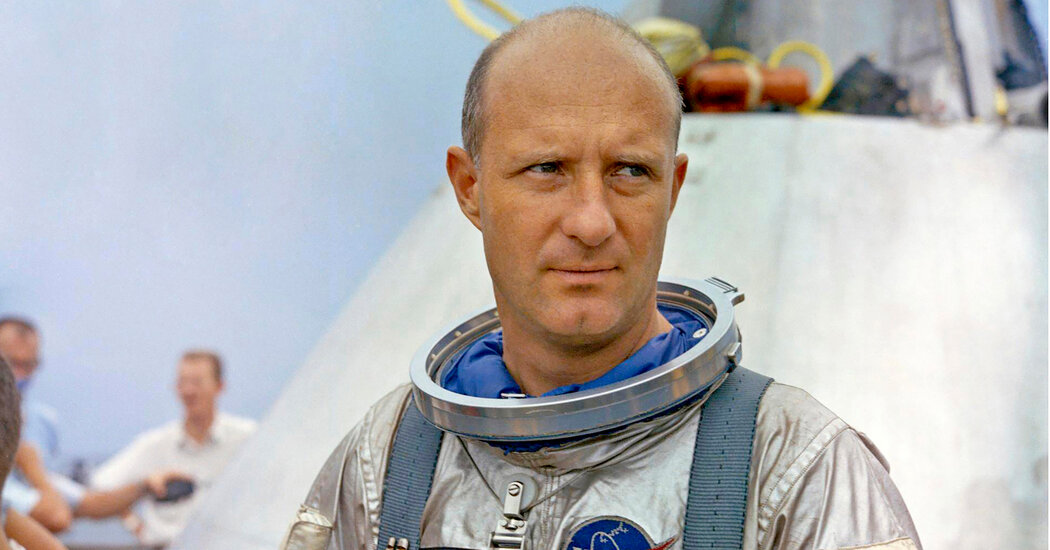
The Apollo-Soyuz mission, amid the Cold War, broke new ground in space cooperation when an American capsule docked with a Soviet craft 140 miles above the earth.
Thomas P. Stafford, an astronaut who pioneered cooperation in space when he commanded the American capsule that linked up with a Soviet spaceship in July 1975, died on Monday in Satellite Beach, Fla. He was 93.
His death, in a retirement home, was confirmed by his wife, Linda. She said he had recently been diagnosed with liver cancer.
General Stafford flew four times in space and orbited within nine miles of the moon’s surface on the mission that preceded the moon walks of Neil Armstrong and Buzz Aldrin in July 1969, fulfilling President John F. Kennedy’s quest to best the Soviet Union in the space race.
But when General Stafford flew with the civilian astronauts Donald K. Slayton, known as Deke, and Vance D. Brand in the Apollo capsule that docked with the Soviet Union’s two-man Soyuz some 140 miles above the earth, he looked beyond the rivalries of world powers.
“I’m sure we have opened up a new era in the history of man,” he told the two Soviet astronauts, Lt. Col. Aleksei A. Leonov and Valery N. Kubasov.
Source: nytimes.com


